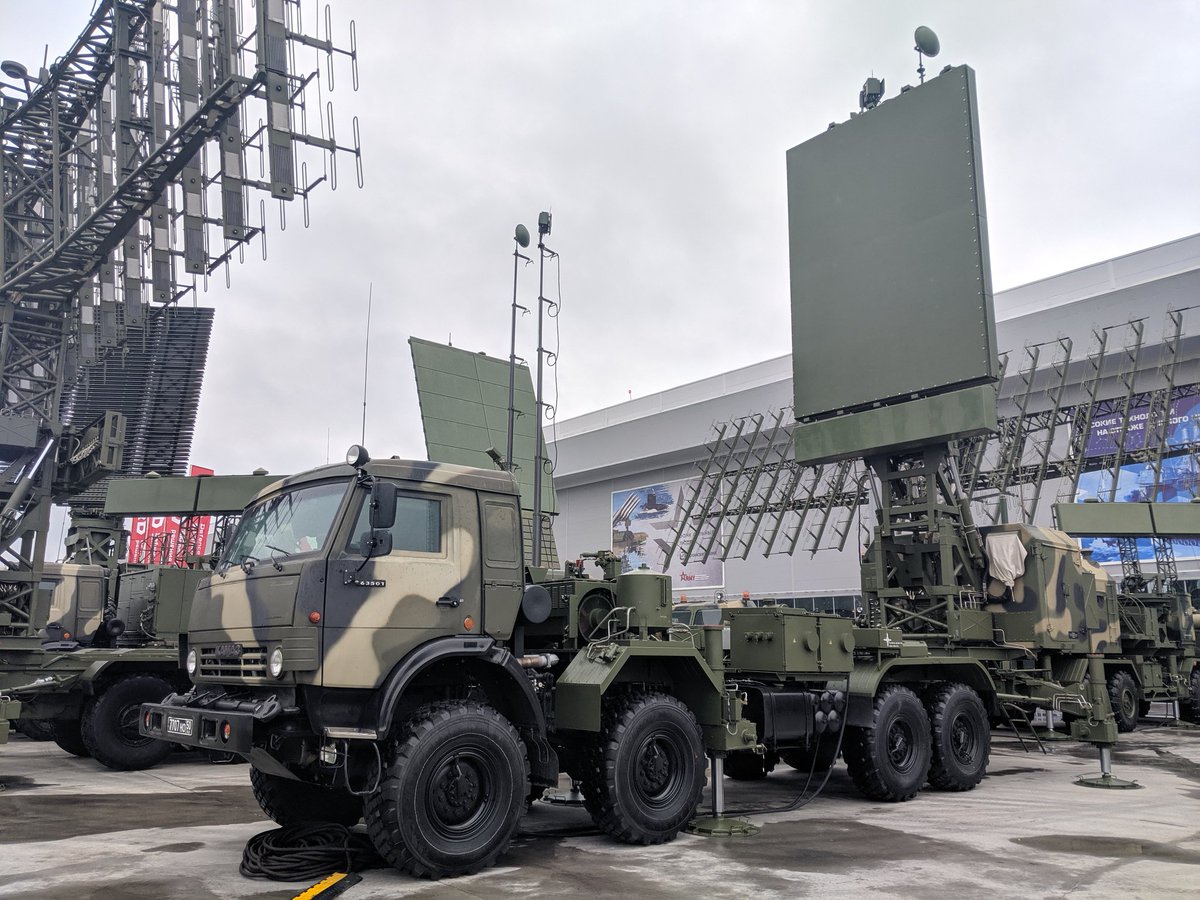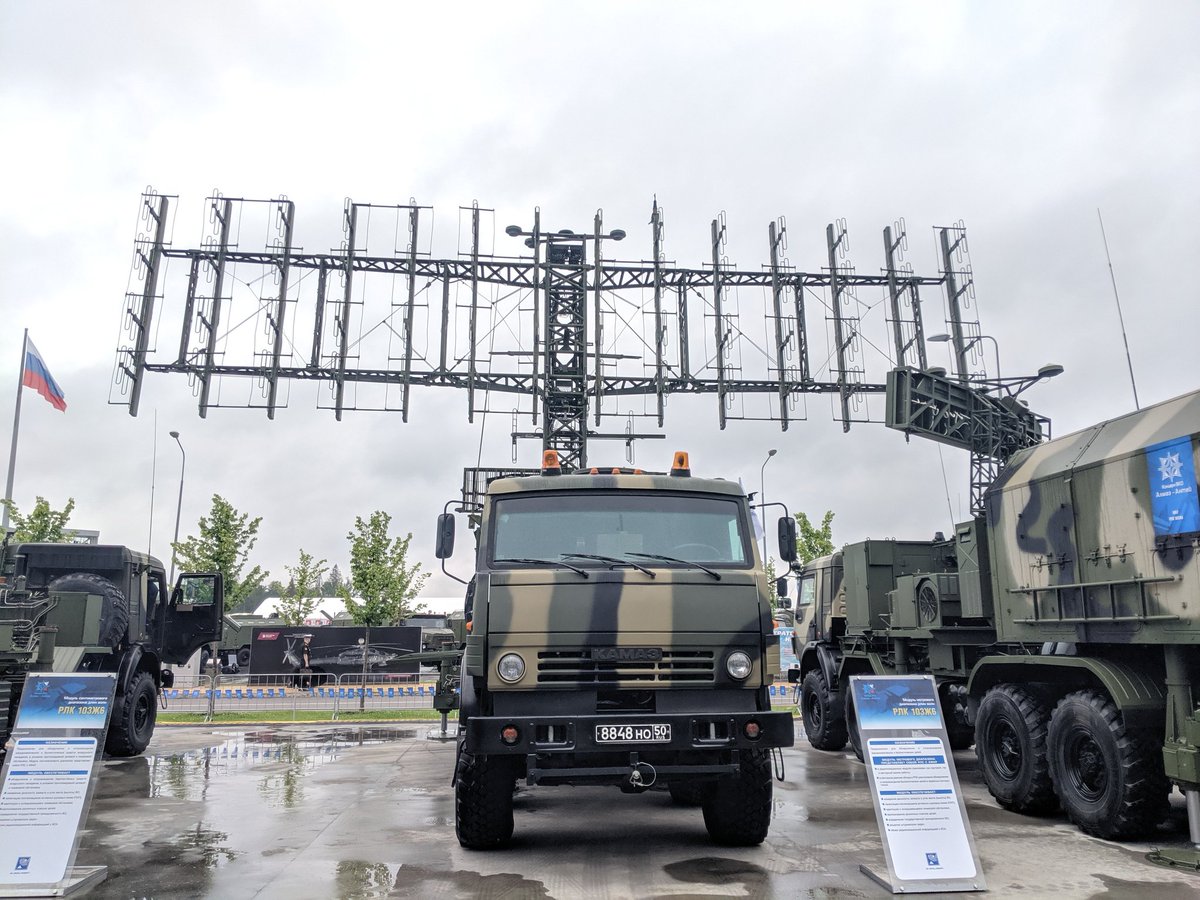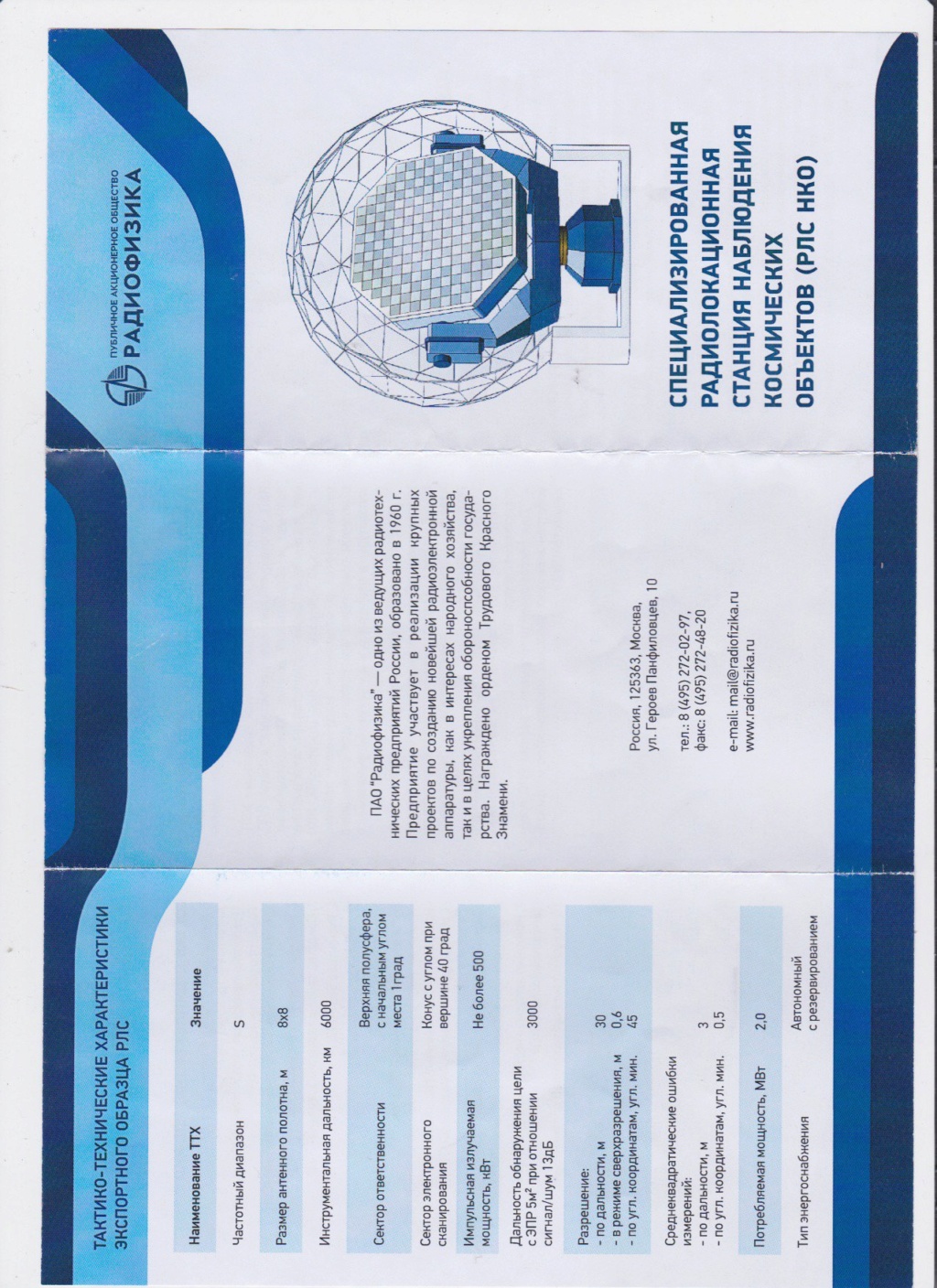Austin wrote:One question who can answer.
Can photonic radar that Russia is working on can detect LO aircraft with high reliability including those designed to evade L & S band wavelength like B-2 or PAK-DA types ?
Can they scale this Radar up to like S-400 class Radars ?
My sources 1st than the explanation later on why it is all hyped up periodically from time to time on articles along with an explanation why the Russians will be ahead of everyone in electronics if everything goes well on their part.
https://itech.aorti.ru/upload/iblock/825/it_22_compressed.pdf
director of the RTI them. A. L. Mints, Alexander Osipov. - The institute has the necessary scientific, technical, software-algorithmic and technological for
affairs for the creation on a single structure of the latest BRKK for spacecraft. In the model of the BRLC, which was created at the institute, important are technologies for raising informativity: the use of innovative probing signal designs, the method of expanding the shooting range, innovative methods for detecting moving objects, superresolution algorithms, methods for processing and integrating radar data. - The basic principles of radar are well known to scientists around the world. It is very difficult to come up with qualitatively new solutions in this area, but we succeeded. With the help of a supercomputer, we have developed deep mathematical analysis algorithms that allow us to detect moving targets. This is a very difficult task that no one has yet solved for us, says Anatoly Leukhin. - The fact is that when we look at the Earth with a locator, we see not only rivers, oceans and cities, but also a huge amount of interference. Because of them, it is sometimes very difficult to see even moving objects. The ability to track moving objects is an essential step in the development of radar. This technology can be widely used for both military and civilian purposes. For example, to create systems
aircraft from space
https://mil.news.sina.com.cn/jssd/2019-05-01/doc-ihvhiqax6102967.shtml
"The official propaganda of the Russians is generally the same: the detection distance is too far, the energy conversion efficiency is as high as 60%, the traditional radar is only 30%, and the noise is 100 times lower than the conventional radar, which greatly improves the signal-to-noise ratio, and the theoretical detection distance for the stealth target. More than 500 kilometers!"
https://weaponews.com/news/11884-kret-has-created-a-sample-of-photonic-radar-for-the-aircraft-of-the-6t.html
"said mikheyev. He explained that "Conventional radar station (radar) radiation is generated by vacuum-tube or semiconductor devices, the efficiency is relatively low – 30-40%". The remaining 60-70% of the energy is converted into heat. The new radar a radar signal is obtained by converting photonic crystal laser coherent energy in a microwave radiation.
This transmitter efficiency will be not less than 60-70%. That is a big part of laser energy will be converted into a radar, with the result that we can create a radar of high power, said the deputy director. The locator will not be a separate module in the nose of the aircraft, it will be a distributed system. Something similar can be seen today on the fifth generation fighter t-50 radar which operates in different bands and in different directions. In fact it is a single locator, but he exploded on the plane. It turns out about three or four different radars, which are comfortably placed around the fuselage and can simultaneously observe all the space around the aircraft, said mikheyev. Radiophony radar will be able to see, according to our estimates, far beyond the existing radar."
These 3 sources tell me the same exact thing. I do not know what Russian source the Chinese have found to make the claim to lower the noise 100 times. But noise in its own definition is interference with a received signal. I will get into the explanation later that MMICs and FICs are as different as apples and oranges. So I cannot find a source where the Chinese have said the noise can be lowered 100 times. However RTI the same company that has made prototype photonic radars has now come up with a solution that satellites with the right software and supercomputers can track targets based on the calculations of algorithms. I looked for every source on the web and I cannot find a single piece of information that firecontrol radar satellites being able to track low altitude targets

this is the 1st article that has claimed this. The West in which KRET and RTI sadly admit they are 5-10 years behind them in MMIC technology(although they are working hard to improve) have not made such a thing happen yet for satellites to track low altitude targets as far as I have searched the web. But since RTI has made the claim they can in which they explained the interference is too high but they made it work which makes me suggest FICs(photonic integrated circuits) lowered the interference enough to make it work(track low altitude targets from space) because the Russians sure as hell cannot do this with MMICs. If a huge constellation of satellites is being made than I am sure this information can be shared to aircrafts.
Semiconductors or MMICs always have noise because of electronic signals. Mikheeyev explains lasers lower the noise hence transmitter efficiency significantly increases about twice as much as conventional radars. The "we can see farther than the existing radar" seems to make a lot of sense. Noise inside a conventional radar makes it difficult to detect or track a target remove that noise with lasers the easier it is to track or detect a target. Instead of seeing a 1m2 target at 400kms you can see a .01m2 target at 400kms instead the reason being is if noise is lowered or removed the better the signal is received and picked up. That is the magic of ROFAR also it comes with the benefit of ultra-high SAR resolution.
Why other countries are behind even if the Russians have way less funding they are still ahead in this field.https://phys.org/news/2014-03-fully-photonics-based-laser.html
The radar system, part of a project known as PHODIR (Photonics-based fully digital radar) is an effort to improve the tracking and speed calculation abilities of current electronic signal based systems. It's well understood that making improvements in such a system will require higher frequency signals, something that can't be done with current systems due to an increase in noise that creates more uncertainty in the signals received. For that reason, scientists have been looking to use lasers—such signals are much more stable.
Same said shit by KRET but a different source making my claim more believable. Here they are attempting to lower the noise using lasers for received signals to be better heard. However this sad part comes later.
(Phys.org) —A team of researchers in Italy has developed the first fully photonics-based coherent radar system. In their paper published in the journal Nature, the team describes how they built their new radar system and what it might mean for the future of radar systems. Jason McKinney of the US Naval Research Laboratory offers a News & Views perspective piece on the development of the radar system in the same issue and outlines issues involved with attempting to implement such a system into real world applications.
The radar system the team built is still just a prototype, though it does appear feasible. The team tested its abilities by monitoring real aircraft taking off at a nearby airport and then comparing what they observed with data from traditional electronic signal based systems. They report that the systems matched very closely. That of course is just an initial test, as McKinney notes, much more research and testing will need to be done before the researchers will know if such a system could provide better results than conventional systems. Also, another area of concern is range, which could impact jitter, and thus the accuracy of the system.
US in 2014 say they have the same issues about making such a system apply to the real world. Italy says they have made the system match very closely to traditional radars. This means they have not improved ROFAR to exceed conventional radars this is said both by the Europeans and the US. On top of that this is now a closed project https://cordis.europa.eu/project/rcn/92836/factsheet/en
https://uanews.arizona.edu/press-release/ua-selected-photonics-project source from august 2017 or exactly 2 years ago
TUCSON, Ariz. — The American Institute for Manufacturing Integrated Photonics (AIM Photonics), a public-private partnership advancing the nation's photonics manufacturing capabilities, has announced the winner of a proposal call for a new Defense Department Government Directed Project for photonic integrated circuit, or PIC, data links for cryogenic focal plane arrays, or FPAs
Frank Jaworski, program manager for emerging technology at Raytheon Vision Systems, added: "Raytheon regards the integration of photonic integrated circuits with focal plane arrays as a critical path for the development of future Department of Defense imaging systems vital to the nation's security. We look forward to the University of Arizona's leadership of the consortium and utilizing their expertise in developing this key technology."
Neil Supola, chief of the infrared focal plane array branch at the Army's Night Vision and Electronic Sensors Directorate and government program manager for AIM Photonics, said: "This program is a great opportunity for the Department of Defense to leverage advances in integrated photonics manufacturing being realized by the Manufacturing USA program together with its state, industrial and academic partners. The scope of industrial participation on this project highlights the relevance photonic integration has within the Department of Defense community, and this project's inherent potential to make a large impact."
In other words more funding for a state university to make better use of the technology(like try to catch up to RTI or KRET) instead of having the same conclusion as the phodir project by not making it exceed a conventional radar.
https://itech.aorti.ru/ No. 1 (20) of 2018
"- In your opinion, what are
domestic prospects
radiophoton component base?
- The prospects are good. Opening the veil of our plans, I note that
we are going to actively apply
radio photonic technologies for deep modernization of existing
Radar and the creation of advanced radars. This will allow to realize
promising synthesis methods
radiation, reception and processing of radar signals (including
ultra wideband) based
new competitive domestic products: radiophotonic
super fast analog digital
converters (ADC), photon
digital processors, electron-optical signal generators,
optical delay lines, parallel optical supervisors, optical-electronic systems
antenna control and calibration.
Integrated application of photonics
in the AFAR equipment will provide a scientific and technological breakthrough in the field of
radar, communications and electronic warfare, will provide
Consumers have significant advantages over traditional
hardware.
Develop radiophotonics in JSC "RTI"
planned primarily at the base
production capacity
Connector Optics LLC and OJSC
"OKB-Planet". The existing competencies of these enterprises make it possible to organize a complete
serial process chain
production of VIL and semiconductor modulators in microchip
performance.
As for semiconductor
modulators in microchip
performance, then in 2019 the research
work on this topic in which
OKB-Planeta OJSC is an industrial partner.
Within three to five years is possible
organization of the development, design and production of photonic
integrated circuits (FIS) both in packageless execution, and in the case.
The implementation of these plans will allow
JSC "RTI" take a leading position
in development and production
advanced domestic radio systems based on component
radiophotonic bases.
Replacing semiconductor components with radiophotonic components makes it possible to significantly simplify circuit solutions and functional
the construction of equipment, at times reducing its weight and size indicators
and power consumption.
The use of radiophotonics in radar systems provides
both quantitative and qualitative
advantages, including an increase in the order of the instantaneous width
signal spectrum, decrease by three
the order of transmission losses, reducing the weight and size of devices, a significant increase in resistance to electromagnetic pulses,
as well as minimizing interchannel
pickups.
- Shaping and processing radar signals in optical
range solves many problems
characteristic of electron propagation in copper conductors and in semiconductors, - explains Sergey
Saprykin. -
From here follow
the possibility of inertialess scanning sector review and real
adaptation to the noise-target environment, that is, the radar noise immunity increases. Huge frequency
range of radiophotonic radar allows
organize multi-frequency mode
work and the instantaneous signal bandwidth
in tens of gigahertz - to build a radar portrait of objects, to carry out spatial selection and effectively classify goals,
including stealth technology.
In addition to the complex of works on the creation of an integral radiophoton component base for radiolocation,
Interesting solutions can be obtained by applying radiophotonic technology to another new for NPK
work direction - radio engineering
terahertz range. The terahertz direction in NIIDAR has appeared recently, and the proven solutions in the world in engineering and circuit design
in this area is still very small.
- We started working on three
main areas where the previously inaccessible possibilities for the terahertz frequency range open up: radar with miniature
dimensions and superresolution
probing hazardous items
in inspection complexes as well
oncology diagnosis and treatment
diseases, explains Sergey Dmitrievich. - Bye hardware solutions
look not very elegant, but with the advent of radio photonics for the terahertz range, a technological breakthrough is possible, and we expect
among the first to enter the market
with new products.""
2019 they say 3-5 years they will start mass production of FICs and you would usually not do this if something does not work. They are even planning to raise it the THZ level. they also made a photonic radar balloon like this to assist SAMs.
"and object heights hc calculated by known
relations from the theory of radio communications (without
the effects of possible obstacles on the ground).
From the graphs it can be seen, for example, that with a height
facility 800 m line of sight
with increasing antenna height from 2 m to 1000 m
increases by 2 times (from 105 to 215 km),
and at an object height of 2 m, 12 times (from 10 to 120 km).
That is, the effect of lifting antennas in order to expand the serviced spatial zone is especially increased for ground and
at extremely low altitudes of objects."
RTI wont be in the maks airshow. KRET's 2018 pdf book talks about ROFAR being used in EW and in the end of their page they hinted the maks 2019 airshow so maybe before this year they will have a 2019 pdf book so hopefully more information on this. So if the 100 times lower noise is true making tracking targets even better. I wonder how ROFAR in terms of radar suppression technology would exceed conventional MMIC jammers making the adversary have more difficult time tracking the target while they say ROFAR is immune to the adversaries jammers. I had made a hardcore Russian electronics critic like ActionJackson(f-16.net/key forum pub) username appear more than usual whenever I brought this subject up at key forum pub so I guess I must being doing something right.




 Isos
Isos






 this is the 1st article that has claimed this. The West in which KRET and RTI sadly admit they are 5-10 years behind them in MMIC technology(although they are working hard to improve) have not made such a thing happen yet for satellites to track low altitude targets as far as I have searched the web. But since RTI has made the claim they can in which they explained the interference is too high but they made it work which makes me suggest FICs(photonic integrated circuits) lowered the interference enough to make it work(track low altitude targets from space) because the Russians sure as hell cannot do this with MMICs. If a huge constellation of satellites is being made than I am sure this information can be shared to aircrafts.
this is the 1st article that has claimed this. The West in which KRET and RTI sadly admit they are 5-10 years behind them in MMIC technology(although they are working hard to improve) have not made such a thing happen yet for satellites to track low altitude targets as far as I have searched the web. But since RTI has made the claim they can in which they explained the interference is too high but they made it work which makes me suggest FICs(photonic integrated circuits) lowered the interference enough to make it work(track low altitude targets from space) because the Russians sure as hell cannot do this with MMICs. If a huge constellation of satellites is being made than I am sure this information can be shared to aircrafts.